Susu Xu
Where You Go is Who You Are: Behavioral Theory-Guided LLMs for Inverse Reinforcement Learning
May 22, 2025Abstract:Big trajectory data hold great promise for human mobility analysis, but their utility is often constrained by the absence of critical traveler attributes, particularly sociodemographic information. While prior studies have explored predicting such attributes from mobility patterns, they often overlooked underlying cognitive mechanisms and exhibited low predictive accuracy. This study introduces SILIC, short for Sociodemographic Inference with LLM-guided Inverse Reinforcement Learning (IRL) and Cognitive Chain Reasoning (CCR), a theoretically grounded framework that leverages LLMs to infer sociodemographic attributes from observed mobility patterns by capturing latent behavioral intentions and reasoning through psychological constructs. Particularly, our approach explicitly follows the Theory of Planned Behavior (TPB), a foundational behavioral framework in transportation research, to model individuals' latent cognitive processes underlying travel decision-making. The LLMs further provide heuristic guidance to improve IRL reward function initialization and update by addressing its ill-posedness and optimization challenges arising from the vast and unstructured reward space. Evaluated in the 2017 Puget Sound Regional Council Household Travel Survey, our method substantially outperforms state-of-the-art baselines and shows great promise for enriching big trajectory data to support more behaviorally grounded applications in transportation planning and beyond.
Spatially-Heterogeneous Causal Bayesian Networks for Seismic Multi-Hazard Estimation: A Variational Approach with Gaussian Processes and Normalizing Flows
Apr 05, 2025

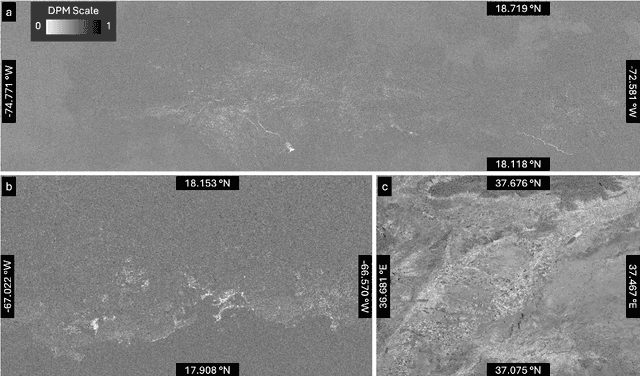

Abstract:Post-earthquake hazard and impact estimation are critical for effective disaster response, yet current approaches face significant limitations. Traditional models employ fixed parameters regardless of geographical context, misrepresenting how seismic effects vary across diverse landscapes, while remote sensing technologies struggle to distinguish between co-located hazards. We address these challenges with a spatially-aware causal Bayesian network that decouples co-located hazards by modeling their causal relationships with location-specific parameters. Our framework integrates sensing observations, latent variables, and spatial heterogeneity through a novel combination of Gaussian Processes with normalizing flows, enabling us to capture how same earthquake produces different effects across varied geological and topographical features. Evaluations across three earthquakes demonstrate Spatial-VCBN achieves Area Under the Curve (AUC) improvements of up to 35.2% over existing methods. These results highlight the critical importance of modeling spatial heterogeneity in causal mechanisms for accurate disaster assessment, with direct implications for improving emergency response resource allocation.
Multi-resolution Score-Based Variational Graphical Diffusion for Causal Disaster System Modeling and Inference
Apr 05, 2025Abstract:Complex systems with intricate causal dependencies challenge accurate prediction. Effective modeling requires precise physical process representation, integration of interdependent factors, and incorporation of multi-resolution observational data. These systems manifest in both static scenarios with instantaneous causal chains and temporal scenarios with evolving dynamics, complicating modeling efforts. Current methods struggle to simultaneously handle varying resolutions, capture physical relationships, model causal dependencies, and incorporate temporal dynamics, especially with inconsistently sampled data from diverse sources. We introduce Temporal-SVGDM: Score-based Variational Graphical Diffusion Model for Multi-resolution observations. Our framework constructs individual SDEs for each variable at its native resolution, then couples these SDEs through a causal score mechanism where parent nodes inform child nodes' evolution. This enables unified modeling of both immediate causal effects in static scenarios and evolving dependencies in temporal scenarios. In temporal models, state representations are processed through a sequence prediction model to predict future states based on historical patterns and causal relationships. Experiments on real-world datasets demonstrate improved prediction accuracy and causal understanding compared to existing methods, with robust performance under varying levels of background knowledge. Our model exhibits graceful degradation across different disaster types, successfully handling both static earthquake scenarios and temporal hurricane and wildfire scenarios, while maintaining superior performance even with limited data.
Multi-class Seismic Building Damage Assessment from InSAR Imagery using Quadratic Variational Causal Bayesian Inference
Feb 25, 2025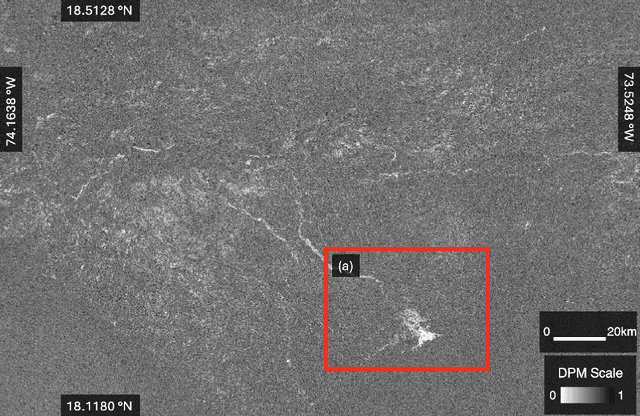
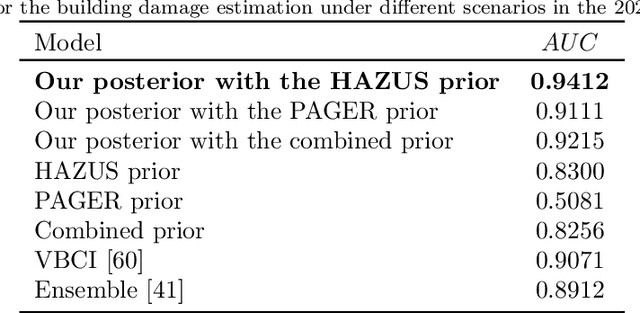
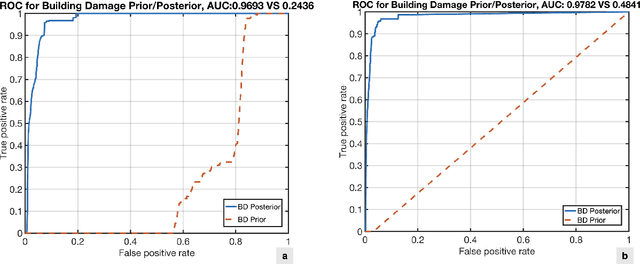
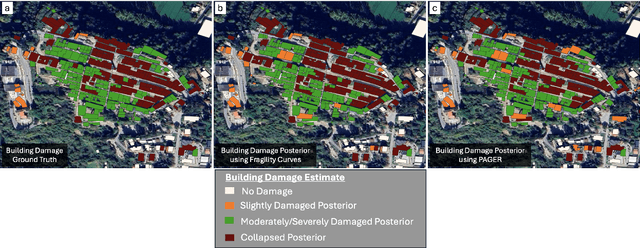
Abstract:Interferometric Synthetic Aperture Radar (InSAR) technology uses satellite radar to detect surface deformation patterns and monitor earthquake impacts on buildings. While vital for emergency response planning, extracting multi-class building damage classifications from InSAR data faces challenges: overlapping damage signatures with environmental noise, computational complexity in multi-class scenarios, and the need for rapid regional-scale processing. Our novel multi-class variational causal Bayesian inference framework with quadratic variational bounds provides rigorous approximations while ensuring efficiency. By integrating InSAR observations with USGS ground failure models and building fragility functions, our approach separates building damage signals while maintaining computational efficiency through strategic pruning. Evaluation across five major earthquakes (Haiti 2021, Puerto Rico 2020, Zagreb 2020, Italy 2016, Ridgecrest 2019) shows improved damage classification accuracy (AUC: 0.94-0.96), achieving up to 35.7% improvement over existing methods. Our approach maintains high accuracy (AUC > 0.93) across all damage categories while reducing computational overhead by over 40% without requiring extensive ground truth data.
From Perceptions to Decisions: Wildfire Evacuation Decision Prediction with Behavioral Theory-informed LLMs
Feb 24, 2025Abstract:Evacuation decision prediction is critical for efficient and effective wildfire response by helping emergency management anticipate traffic congestion and bottlenecks, allocate resources, and minimize negative impacts. Traditional statistical methods for evacuation decision prediction fail to capture the complex and diverse behavioral logic of different individuals. In this work, for the first time, we introduce FLARE, short for facilitating LLM for advanced reasoning on wildfire evacuation decision prediction, a Large Language Model (LLM)-based framework that integrates behavioral theories and models to streamline the Chain-of-Thought (CoT) reasoning and subsequently integrate with memory-based Reinforcement Learning (RL) module to provide accurate evacuation decision prediction and understanding. Our proposed method addresses the limitations of using existing LLMs for evacuation behavioral predictions, such as limited survey data, mismatching with behavioral theory, conflicting individual preferences, implicit and complex mental states, and intractable mental state-behavior mapping. Experiments on three post-wildfire survey datasets show an average of 20.47% performance improvement over traditional theory-informed behavioral models, with strong cross-event generalizability. Our complete code is publicly available at https://github.com/SusuXu-s-Lab/FLARE
Spatial-variant causal Bayesian inference for rapid seismic ground failures and impacts estimation
Nov 18, 2024Abstract:Rapid and accurate estimation of post-earthquake ground failures and building damage is critical for effective post-disaster responses. Progression in remote sensing technologies has paved the way for rapid acquisition of detailed, localized data, enabling swift hazard estimation through analysis of correlation deviations between pre- and post-quake satellite imagery. However, discerning seismic hazards and their impacts is challenged by overlapping satellite signals from ground failures, building damage, and environmental noise. Previous advancements introduced a novel causal graph-based Bayesian network that continually refines seismic ground failure and building damage estimates derived from satellite imagery, accounting for the intricate interplay among geospatial elements, seismic activity, ground failures, building structures, damages, and satellite data. However, this model's neglect of spatial heterogeneity across different locations in a seismic region limits its precision in capturing the spatial diversity of seismic effects. In this study, we pioneer an approach that accounts for spatial intricacies by introducing a spatial variable influenced by the bilateral filter to capture relationships from surrounding hazards. The bilateral filter considers both spatial proximity of neighboring hazards and their ground shaking intensity values, ensuring refined modeling of spatial relationships. This integration achieves a balance between site-specific characteristics and spatial tendencies, offering a comprehensive representation of the post-disaster landscape. Our model, tested across multiple earthquake events, demonstrates significant improvements in capturing spatial heterogeneity in seismic hazard estimation. The results highlight enhanced accuracy and efficiency in post-earthquake large-scale multi-impact estimation, effectively informing rapid disaster responses.
* This paper was accepted for 2024 WCEE conference
SniffySquad: Patchiness-Aware Gas Source Localization with Multi-Robot Collaboration
Nov 09, 2024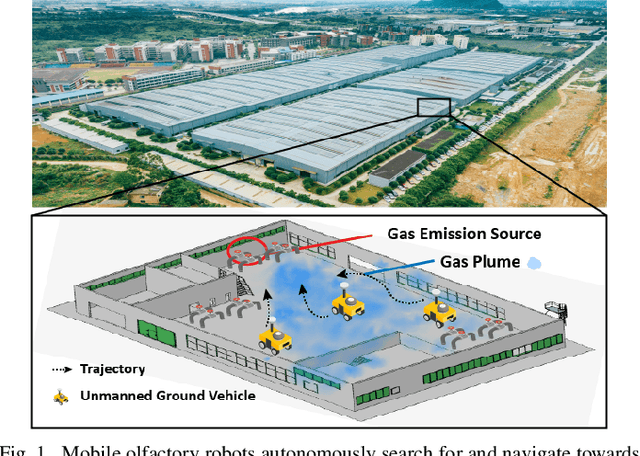
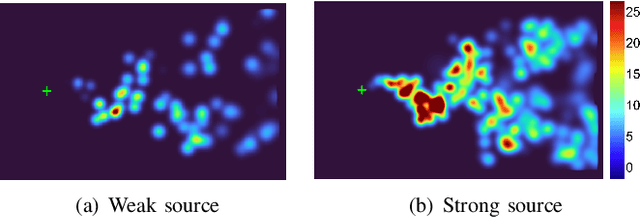
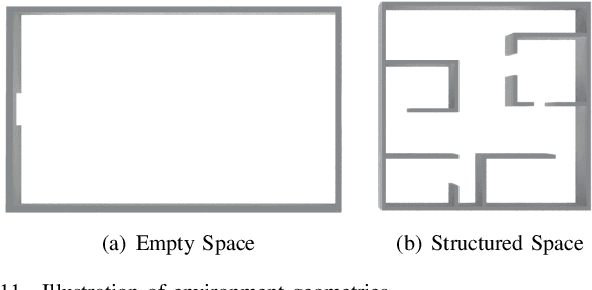
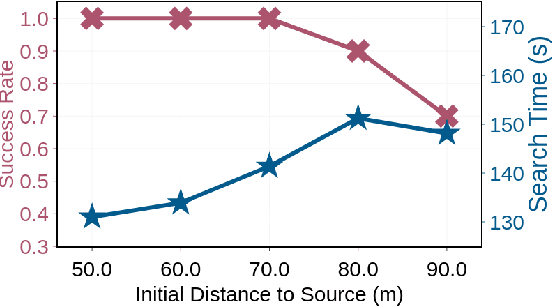
Abstract:Gas source localization is pivotal for the rapid mitigation of gas leakage disasters, where mobile robots emerge as a promising solution. However, existing methods predominantly schedule robots' movements based on reactive stimuli or simplified gas plume models. These approaches typically excel in idealized, simulated environments but fall short in real-world gas environments characterized by their patchy distribution. In this work, we introduce SniffySquad, a multi-robot olfaction-based system designed to address the inherent patchiness in gas source localization. SniffySquad incorporates a patchiness-aware active sensing approach that enhances the quality of data collection and estimation. Moreover, it features an innovative collaborative role adaptation strategy to boost the efficiency of source-seeking endeavors. Extensive evaluations demonstrate that our system achieves an increase in the success rate by $20\%+$ and an improvement in path efficiency by $30\%+$, outperforming state-of-the-art gas source localization solutions.
Preventing Model Collapse in Deep Canonical Correlation Analysis by Noise Regularization
Nov 01, 2024



Abstract:Multi-View Representation Learning (MVRL) aims to learn a unified representation of an object from multi-view data. Deep Canonical Correlation Analysis (DCCA) and its variants share simple formulations and demonstrate state-of-the-art performance. However, with extensive experiments, we observe the issue of model collapse, {\em i.e.}, the performance of DCCA-based methods will drop drastically when training proceeds. The model collapse issue could significantly hinder the wide adoption of DCCA-based methods because it is challenging to decide when to early stop. To this end, we develop NR-DCCA, which is equipped with a novel noise regularization approach to prevent model collapse. Theoretical analysis shows that the Correlation Invariant Property is the key to preventing model collapse, and our noise regularization forces the neural network to possess such a property. A framework to construct synthetic data with different common and complementary information is also developed to compare MVRL methods comprehensively. The developed NR-DCCA outperforms baselines stably and consistently in both synthetic and real-world datasets, and the proposed noise regularization approach can also be generalized to other DCCA-based methods such as DGCCA.
Post-hurricane building damage assessment using street-view imagery and structured data: A multi-modal deep learning approach
Apr 11, 2024Abstract:Accurately assessing building damage is critical for disaster response and recovery. However, many existing models for detecting building damage have poor prediction accuracy due to their limited capabilities of identifying detailed, comprehensive structural and/or non-structural damage from the street-view image. Additionally, these models mainly rely on the imagery data for damage classification, failing to account for other critical information, such as wind speed, building characteristics, evacuation zones, and distance of the building to the hurricane track. To address these limitations, in this study, we propose a novel multi-modal (i.e., imagery and structured data) approach for post-hurricane building damage classification, named the Multi-Modal Swin Transformer (MMST). We empirically train and evaluate the proposed MMST using data collected from the 2022 Hurricane Ian in Florida, USA. Results show that MMST outperforms all selected state-of-the-art benchmark models and can achieve an accuracy of 92.67%, which are 7.71% improvement in accuracy compared to Visual Geometry Group 16 (VGG-16). In addition to the street-view imagery data, building value, building age, and wind speed are the most important predictors for damage level classification. The proposed MMST can be deployed to assist in rapid damage assessment and guide reconnaissance efforts in future hurricanes.
Near-real-time Earthquake-induced Fatality Estimation using Crowdsourced Data and Large-Language Models
Dec 04, 2023Abstract:When a damaging earthquake occurs, immediate information about casualties is critical for time-sensitive decision-making by emergency response and aid agencies in the first hours and days. Systems such as Prompt Assessment of Global Earthquakes for Response (PAGER) by the U.S. Geological Survey (USGS) were developed to provide a forecast within about 30 minutes of any significant earthquake globally. Traditional systems for estimating human loss in disasters often depend on manually collected early casualty reports from global media, a process that's labor-intensive and slow with notable time delays. Recently, some systems have employed keyword matching and topic modeling to extract relevant information from social media. However, these methods struggle with the complex semantics in multilingual texts and the challenge of interpreting ever-changing, often conflicting reports of death and injury numbers from various unverified sources on social media platforms. In this work, we introduce an end-to-end framework to significantly improve the timeliness and accuracy of global earthquake-induced human loss forecasting using multi-lingual, crowdsourced social media. Our framework integrates (1) a hierarchical casualty extraction model built upon large language models, prompt design, and few-shot learning to retrieve quantitative human loss claims from social media, (2) a physical constraint-aware, dynamic-truth discovery model that discovers the truthful human loss from massive noisy and potentially conflicting human loss claims, and (3) a Bayesian updating loss projection model that dynamically updates the final loss estimation using discovered truths. We test the framework in real-time on a series of global earthquake events in 2021 and 2022 and show that our framework streamlines casualty data retrieval, achieving speed and accuracy comparable to manual methods by USGS.
 Add to Chrome
Add to Chrome Add to Firefox
Add to Firefox Add to Edge
Add to Edge